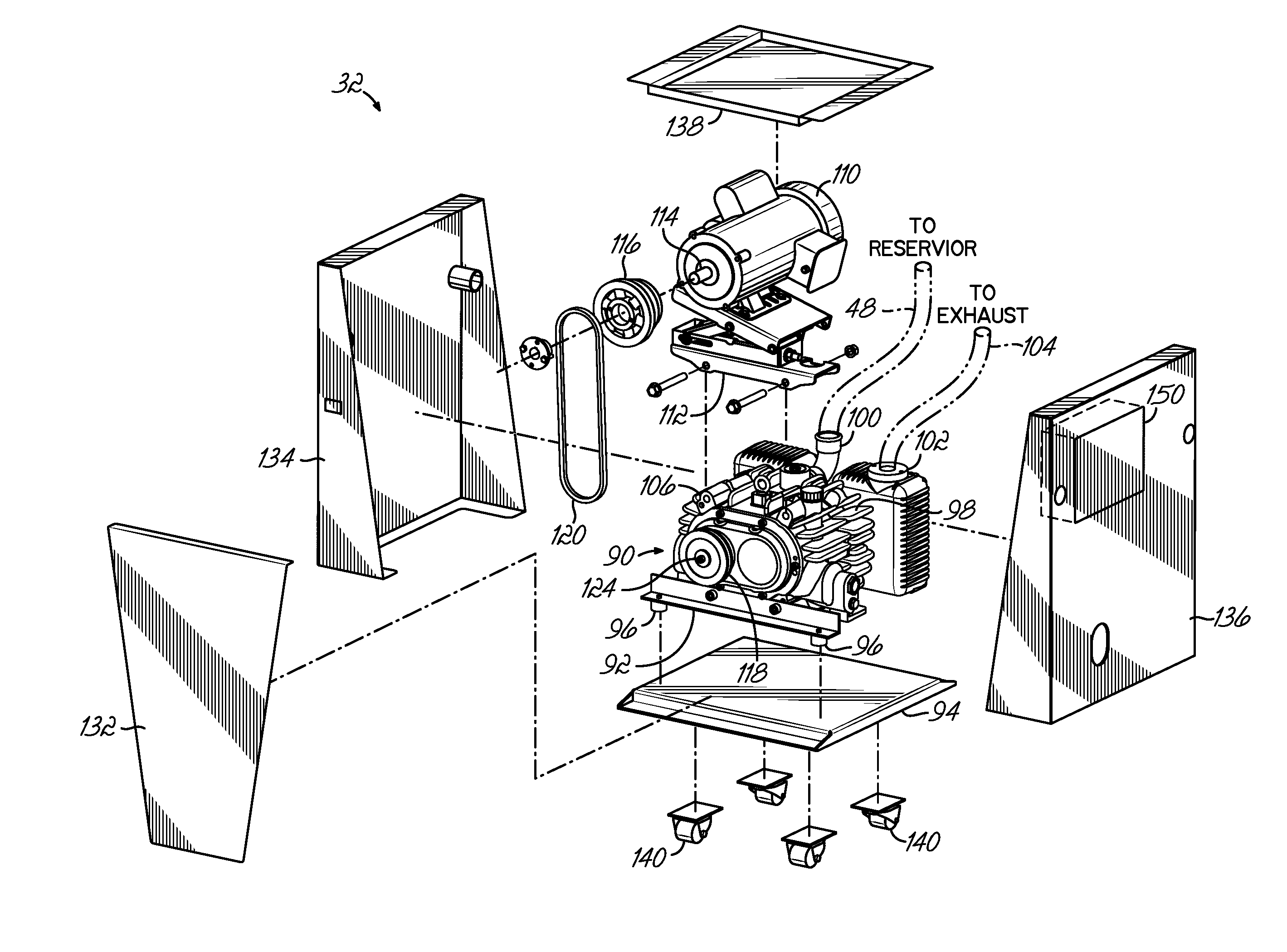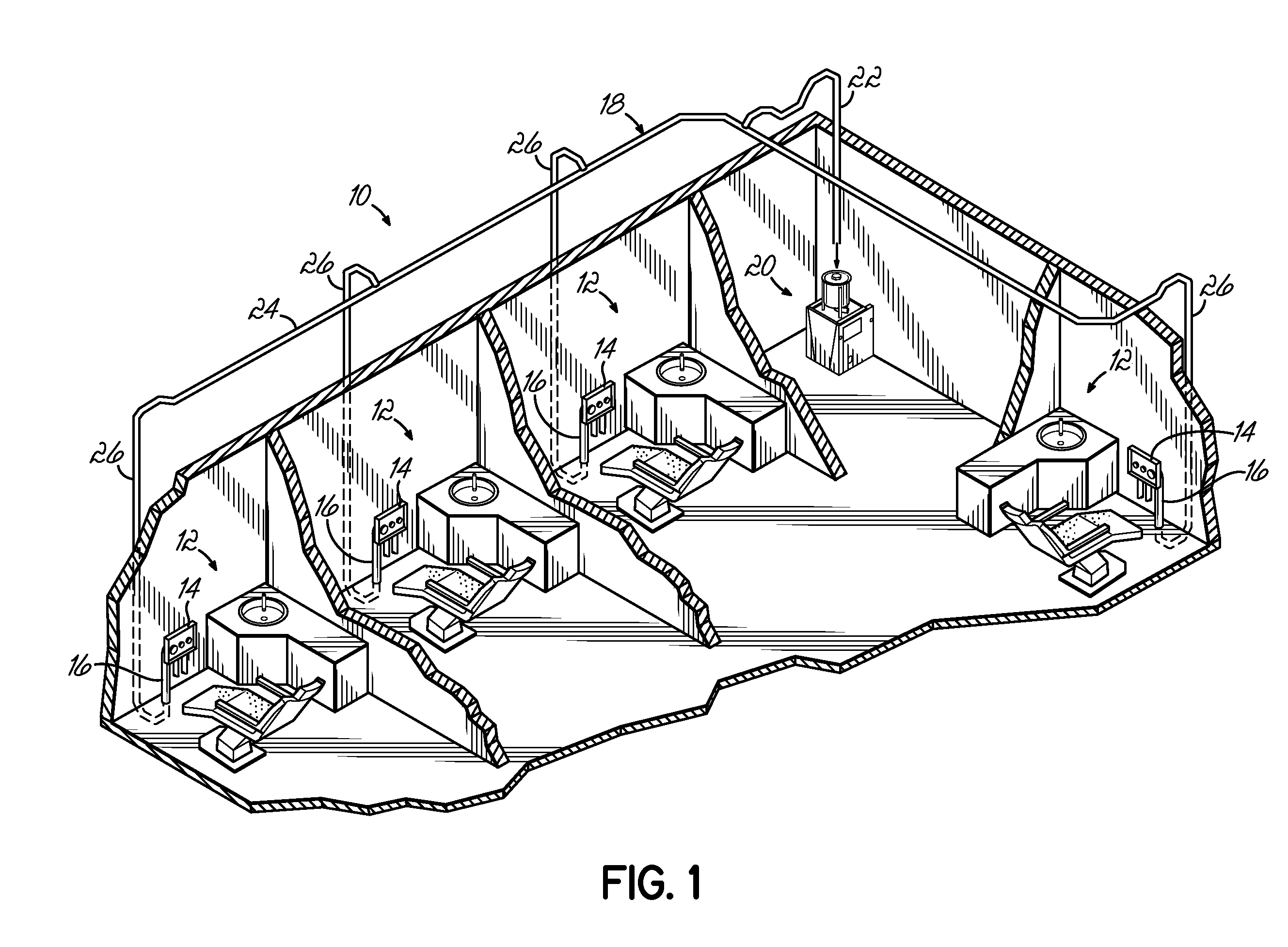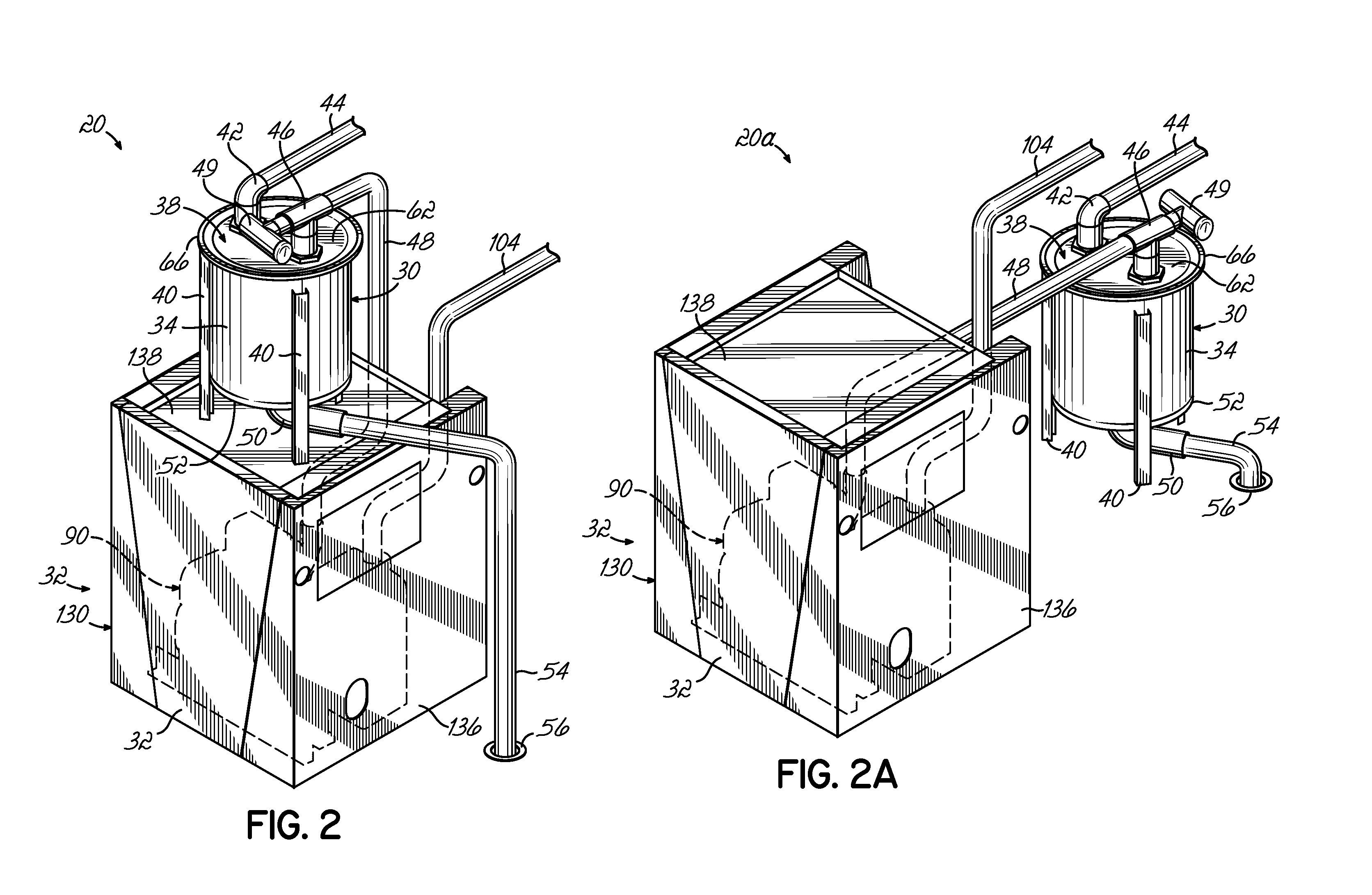Dental Vacuum System
- Summary
- Abstract
- Description
- Claims
- Application Information
AI Technical Summary
Benefits of technology
Problems solved by technology
Method used
Image
Examples
Embodiment Construction
[0018]FIG. 1 illustrates a typical dental office including an exemplary dental vacuum system 10 in accordance with the principles of the present invention. The dental office includes one or more dental operatories 12, each having a station 14 that includes at least one dental aspirator 16. Each aspirator is connected via conduit system 18 to a common vacuum assembly 20 which provides vacuum suction through the conduit system 18 to the aspirators 16. The vacuum assembly 20 will generally be located remote from the operatories 12, such as in a separate room or a utility area of the dental office. The conduit system 18 includes a vacuum line 22 coupled at one end to the vacuum assembly 20. The vacuum line 22 communicates with a distribution line 24 which leads to a plurality of branch lines 26, each coupled to one of the aspirators 16.
[0019]FIG. 2 illustrates the exemplary dental vacuum assembly 20 in more detail. Dental vacuum assembly 20 includes a vacuum reservoir 30 and a pump ass...
PUM
 Login to View More
Login to View More Abstract
Description
Claims
Application Information
 Login to View More
Login to View More - R&D
- Intellectual Property
- Life Sciences
- Materials
- Tech Scout
- Unparalleled Data Quality
- Higher Quality Content
- 60% Fewer Hallucinations
Browse by: Latest US Patents, China's latest patents, Technical Efficacy Thesaurus, Application Domain, Technology Topic, Popular Technical Reports.
© 2025 PatSnap. All rights reserved.Legal|Privacy policy|Modern Slavery Act Transparency Statement|Sitemap|About US| Contact US: help@patsnap.com



